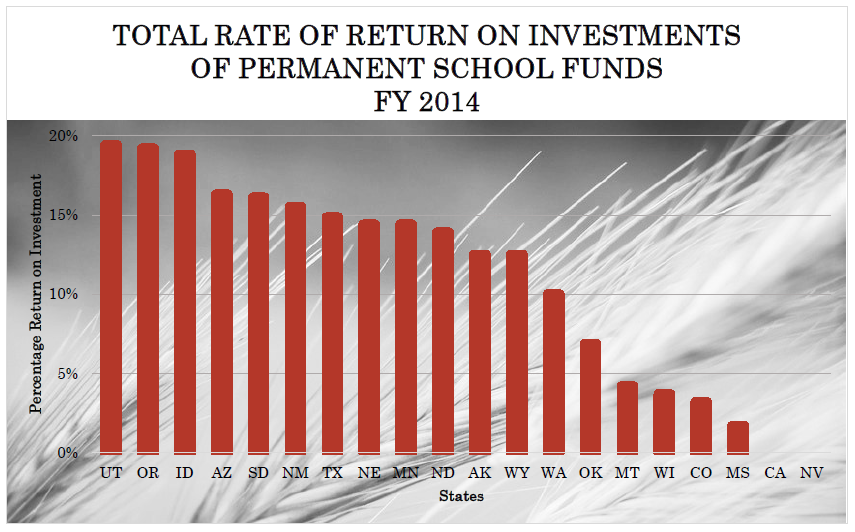State Trust Lands
Currently twenty states participate with the Advocates for School Trust Lands organization. Each of these states retains a trust for public schools. Each state trust is different, beginning with the original land grants, the geographical location, and the land’s resources. The trusts continue to change because of changes in management structure, political support, state statutes, evolving land management opportunities, and the involvement of the beneficiaries.
Methods of Generating Income.
School trusts vary significantly from state to state for a variety of reasons. The original land grants were different from state to state; some states received two or fours sections in each 36 square mile township instead of one and the resources available on the surface and under the granted lands also vary widely.
Currently, some states make the majority of their revenue from forestry, while others generate most of their annual revenue from oil and gas under the surface. Every state generates revenue from grazing, but the percentage of the overall trust land revenue made from grazing varies substantially from state to state. For example, Arizona currently generates the largest percent of annual revenue from land sold at auction for development.
Trust Management
In addition, the method of managing the trust lands varies between states. Some states elect the land commissioner in a state wide election. In other states, the commissioner is appointed by a board or by the governor.
The permanent funds associated with trust lands are also managed differently. In some states, the money is managed within the land office. In Texas, the responsibility lies within the state board of education. In most states, the state treasurer invests the fund, sometimes with and sometimes without an advisory committee. (learn more about School Trusts here)
Funding Education
The flow of funding from the land to schools is unique for every state. A few states save all that is earned minus the expenses of land management. Schools then receive the annual interest and dividends made on the fund. Others distribute the “renewable resource revenue” directly to schools in addition to interest and dividends from the permanent fund.
National Comparisons
The comparisons shown here are provided as a point to begin discussion. Recognizing that every trust is different, every state has something others can learn from. Over the years, land commissioners have continually learned and implemented new ideas from their sister states, improving what they already do well.
State of the States
To learn more about school trust lands in your state, see our States page (here) for more information.

